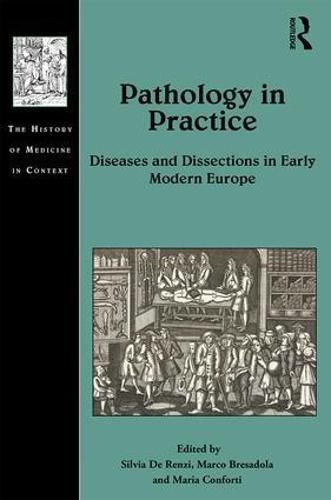Readings Newsletter
Become a Readings Member to make your shopping experience even easier.
Sign in or sign up for free!
You’re not far away from qualifying for FREE standard shipping within Australia
You’ve qualified for FREE standard shipping within Australia
The cart is loading…






Post-mortems may have become a staple of our TV viewing, but the long history of this practice is still little known. This book provides a fresh account of the dissections that took place across early modern Europe on those who had died of a disease or in unclear circumstances. Drawing on different approaches and on sources as varied as notes taken at the dissection table, legal records and learned publications, the chapters explore how autopsies informed the understanding of pathology of all those involved. With a broad geography, including Rome, Amsterdam and Geneva, the book recaptures the lost worlds of physicians, surgeons, patients, families and civic authorities as they used corpses to understand diseases and make sense of suffering. The evidence from post-mortems was not straightforward, but between 1500 and 1750 medical practitioners rose to the challenge, proposing various solutions to the difficulties they encountered and creating a remarkable body of knowledge. The book shows the scope and diversity of this tradition and how laypeople contributed their knowledge and expectations to the wide-ranging exchanges stimulated by the opening of bodies.
$9.00 standard shipping within Australia
FREE standard shipping within Australia for orders over $100.00
Express & International shipping calculated at checkout
Post-mortems may have become a staple of our TV viewing, but the long history of this practice is still little known. This book provides a fresh account of the dissections that took place across early modern Europe on those who had died of a disease or in unclear circumstances. Drawing on different approaches and on sources as varied as notes taken at the dissection table, legal records and learned publications, the chapters explore how autopsies informed the understanding of pathology of all those involved. With a broad geography, including Rome, Amsterdam and Geneva, the book recaptures the lost worlds of physicians, surgeons, patients, families and civic authorities as they used corpses to understand diseases and make sense of suffering. The evidence from post-mortems was not straightforward, but between 1500 and 1750 medical practitioners rose to the challenge, proposing various solutions to the difficulties they encountered and creating a remarkable body of knowledge. The book shows the scope and diversity of this tradition and how laypeople contributed their knowledge and expectations to the wide-ranging exchanges stimulated by the opening of bodies.